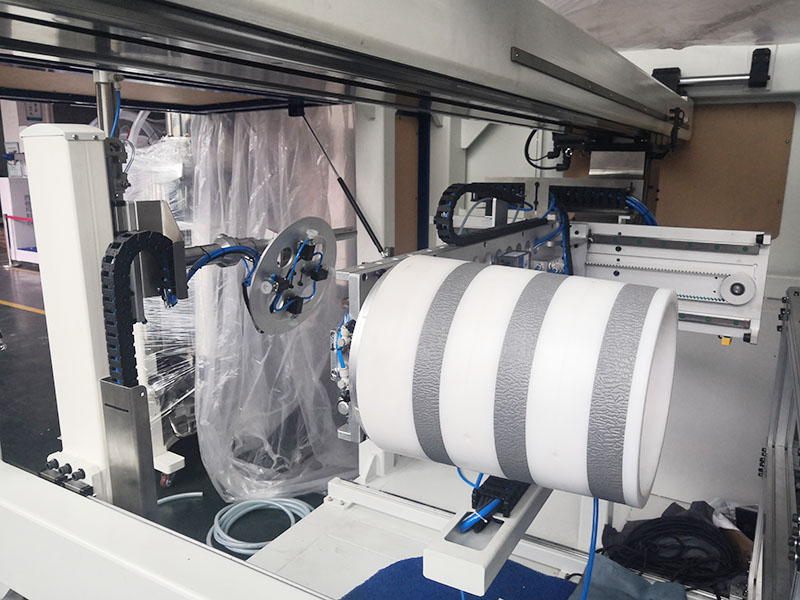
* Title: Revolutionizing Chemical Packaging: The Power of Side Entry IML Systems for 20L Paint Buckets*
* Subtitle: How IML Technology Solves Hot-Stamping Pain Points and Elevates Efficiency, Durability, and Sustainability*
As the chemical and packaging industries evolve, the demand for innovative solutions that balance aesthetics, functionality, and sustainability has never been higher. Traditional hot-stamping methods for 20-liter paint buckets, while once revolutionary, now face critical challenges—label durability, chemical resistance, and production inefficiencies. Enter * Side Entry IML (In-Mold Labeling) Systems* , a game-changing technology that integrates seamlessly with 650-ton injection molding machines to redefine packaging standards. Let’s explore why IML is the future and how it addresses the pressing needs of chemical container manufacturers.
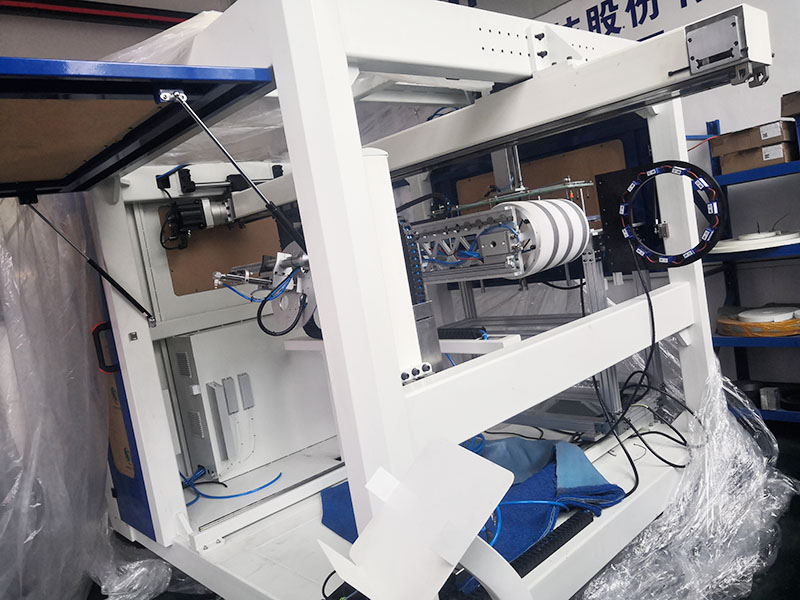
* 1. The Limitations of Hot-Stamping in Chemical Packaging*
Hot-stamping, a widely used decoration method, involves transferring foil onto pre-formed containers. While cost-effective for simple designs, it struggles with:
- * Poor Durability* : Labels are prone to peeling, scratching, or fading when exposed to harsh chemicals, UV light, or abrasion during transport.
- * Limited Design Flexibility* : Complex 3D shapes, textured surfaces, or multi-color gradients are difficult to achieve, restricting brand differentiation.
- * Environmental Concerns* : Foil waste and adhesive residues contribute to non-recyclable packaging, clashing with global sustainability goals.
- * High Rejection Rates* : Misalignment during stamping leads to inconsistent quality and increased scrap costs.
For 20-liter paint buckets, these issues are magnified. Chemical exposure demands labels that withstand aggressive solvents, while logistics require rugged, tamper-evident designs.
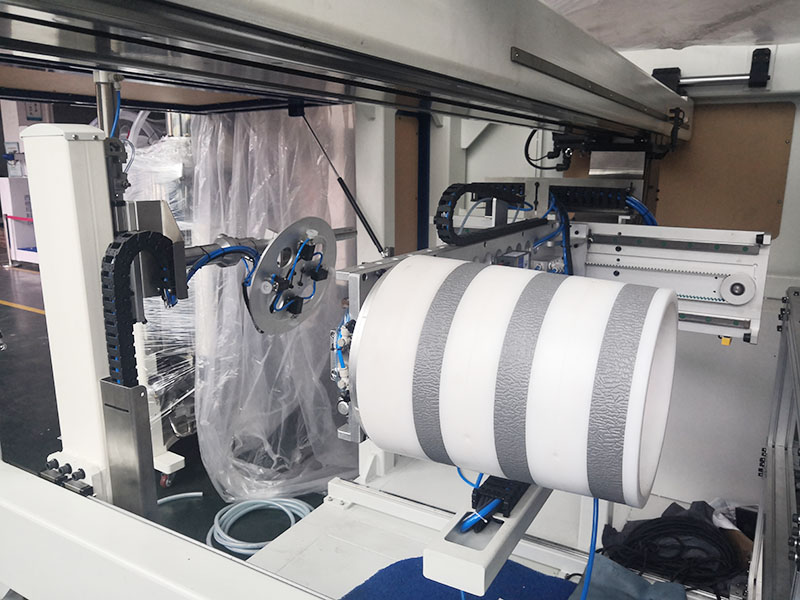
* 2. IML Technology: A Seamless, High-Performance Alternative*
The * Side Entry IML System* integrates decoration directly into the injection molding process. Here’s how it works:
1. * Film Preparation* : A pre-printed PET film (0.1–0.175mm thick) is cut, formed into 3D shapes via thermoforming, and trimmed to fit the mold.
2. * Mold Integration* : Robotic arms precisely position the film into the mold cavity. The 650-ton injection machine then injects molten resin (e.g., PP, HDPE) behind the film, bonding it permanently to the bucket’s surface.
3. * Final Product* : The result is a monolithic structure where the label becomes an inseparable part of the container, ensuring unmatched durability and clarity.
* Key Advantages Over Hot-Stamping* :
- * Superior Durability* : The PET film’s outer layer provides 3H hardness resistance to scratches, chemicals, and UV degradation—ideal for paint buckets stored in harsh environments.
- * 3D Design Freedom* : Complex contours, embossed logos, and edge-to-edge graphics are achievable, enhancing brand appeal.
- * Eco-Friendly* : 100% recyclable materials (PP film + PP resin) align with circular economy principles, reducing waste and carbon footprint.
- * Reduced Downtime* : Automated systems enable rapid label changes, supporting small-batch production without retooling.
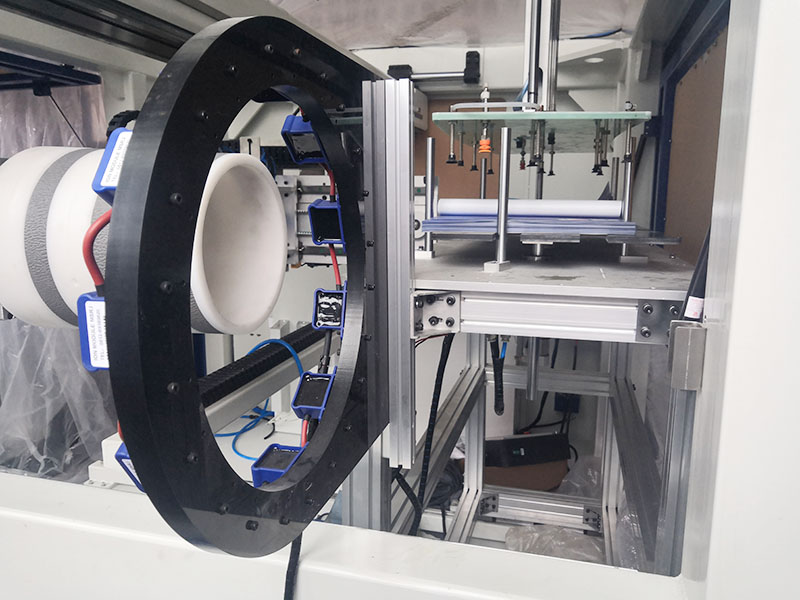
* 3. Why Side Entry IML Systems Excel for 20L Paint Buckets*
Tailored for large containers, this system addresses specific industry demands:
- * Precision Handling* : Robotic arms ensure accurate placement of large-format films, eliminating misalignment and reducing scrap rates.
- * Chemical Resistance* : The PET/INK/adhesive layer structure shields graphics from solvents, ensuring labels remain legible throughout the product lifecycle.
- * Tamper Evidence* : Seamless integration makes label removal impossible, critical for compliance and anti-counterfeiting in chemical logistics.
- * Cost Efficiency* : Lower material waste (no foils or adhesives) and reduced post-processing (no secondary labeling) cut operational costs by up to 30%.
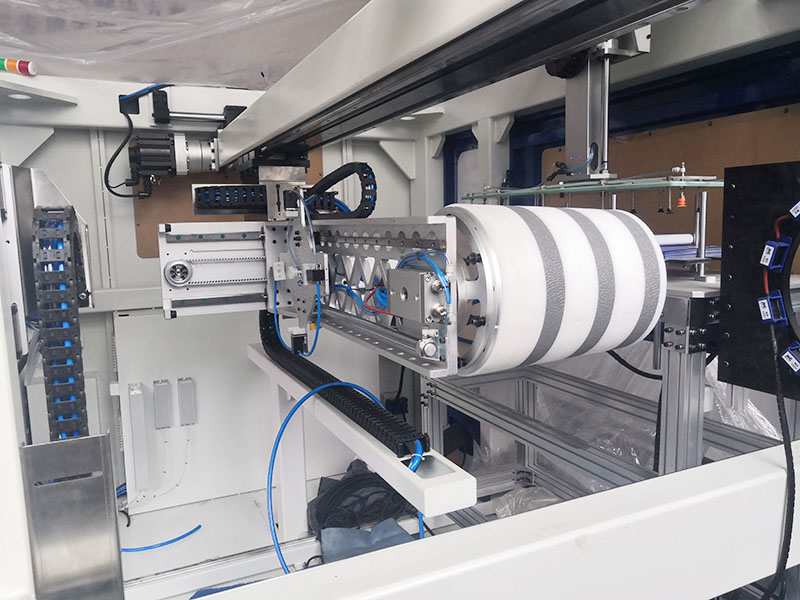
* 4. Overcoming Implementation Challenges*
While transitioning to IML requires upfront investment, strategic planning mitigates risks:
- * Design Optimization* : Avoid sharp edges; incorporate 0.3R minimum radii to prevent film tearing during molding.
- * Material Compatibility* : Select films and resins with matched thermal expansion coefficients to prevent delamination under high
temperatures.
- * Process Calibration* : Fine-tune injection parameters (pressure, cooling time) to avoid warping or air traps, especially for thick-walled buckets.
* 5. Case Study: Success in Action*
A leading European chemical manufacturer replaced hot-stamping with a Side Entry IML system for their 20L industrial paint containers. Results included:
- * 50% Reduction in Defects* : Automated precision eliminated manual errors.
- * Enhanced Branding* : Full-wrap metallic finishes and textured logos boosted shelf appeal.
- * Sustainability Compliance* : Fully recyclable buckets aligned with EU packaging regulations.
* 6. The Future of IML in Chemical Packaging*
With advancements in digital printing and biodegradable films, IML systems will further enable:
- * Smart Labels* : Embedding QR codes or NFC tags during molding for traceability.
- * Light weighting* : Thinner films paired with high-strength resins reduce material use without compromising durability.
- * Global Adoption* : As brands like P&G and Henkel champion IML, SMEs are following suit to stay competitive.
* Conclusion*
For manufacturers of 20-liter paint buckets, the shift from hot-stamping to Side Entry IML systems isn’t just an upgrade—it’s a strategic leap toward future-proofing operations. By combining unmatched durability, design flexibility, and sustainability, IML technology positions your products as leaders in a rapidly evolving market.
* Ready to transform your packaging?*
Let’s discuss how a 650-ton IML-enabled injection molding solution can elevate your brand and bottom line.
#IML Technology #Sustainable Packaging #Chemical Industry
#Injection Molding #Innovation
*References: Insights synthesized from industry white papers, case studies, and technical guidelines.*
Follow us


